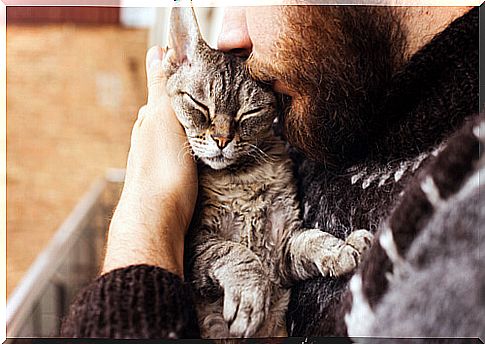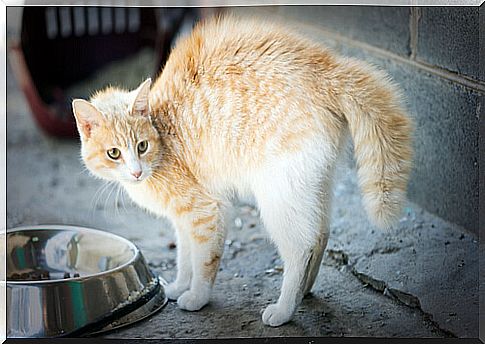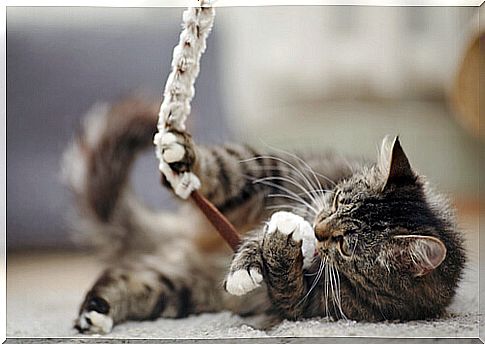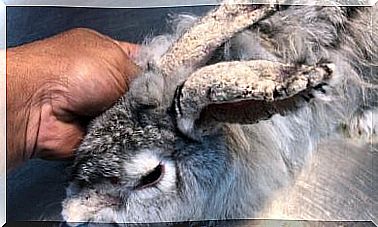Friends Of Cats: What Does Science Say?

Some cats have a reputation for being sullen and not getting along with humans. Although those who live with cats know that they can be very affectionate, scientists have studied the best way to befriend cats.
Befriending cats according to science
Over the last few years there have been a multitude of scientific studies on animal behavior. They have been created from experiments to measure their intelligence and their ability to solve problems to statistics on how to interact with them.
From these latest studies, we want to highlight those that are aimed at making friends with cats. We have compiled a series of scientific conclusions on the best way to get close to a cat or how to facilitate its life indoors.
As is often the case with these kinds of conclusions, we could already imagine some advice. However, in some of them scientists have come up with unexpected and surprising answers.
1. Let him take the initiative
Two Swiss studies drew the same conclusion: if you want to be friends with cats, let him decide to come up and touch you. If you pet the cat before he gives you permission, you will start that relationship on the wrong foot.

One of the studies was done with 50 different cats: the animal approached earlier and was less likely to flee if the human sat and waited for the cat to have the initiative to approach. The other study showed that the cat stayed longer and played more with that person if the presentation was done this way.
2. If the presentation doesn’t go well, give it space
Cats have a very broad body language, with which they convey many things to us. However, few people pay attention to the signals that cats make to show that they are uncomfortable or upset : wagging their tails or flattening their ears, for example.
It has been found that if a cat is respected when it shows these signs, and is allowed to walk away or is stopped petting, it is more likely to return in a short time and take longer to have this same reaction next time.

Cats are loving but independent animals. Too much physical contact tends to overwhelm them: but if they discover that we stop touching them when they ask, they become more likely to want those touches that they previously rejected.
3. Play with him
A study with house cats and in adoption in 2017 showed that cats prefer play with humans to food. Furthermore, cats preferred to play with humans if a toy was involved, although the type of toy depended on the preferences of each cat.
Cats are predators and they are social animals: playing is part of their natural instincts. If you play with your cat, and give him the opportunity to stalk and hunt small toys, your relationship with him will strengthen and his behavior in general will improve.
4. Adopt the cat according to your personality
Regarding adoptions, several statistical studies have been done: one that interviewed adopters of adult cats found that people attribute different personalities to cats based on the color of their hair, when their physical appearance has no influence on their character.

Another study probed the lives of adopters of adult cats: satisfaction with the behavior and relationship with the animal was considerably better in cases in which the human had noticed the personality of the cat before adopting it.
Within the shelters and shelters they are clear: for an adoption to be a success, the personalities of the animal and the human must be taken into account. If in doubt, the best option is to take the cat in for a while to get to know him better. As with people, to be able to befriend cats you need to look at their personality.
5. Don’t let him go out for a walk
A study that was carried out in Italy showed that cats that do not have access to the outside, and that live indoors all day, are more affectionate and docile with their humans than cats that can go for a walk all night or during the day.
One of the causes is attributed to the fact that cats that went outside preferred to be active at night, and sleep during the day, instead of interacting with their family. In contrast, cats kept indoors slept at night and played with their family during daylight hours.
Many different studies of animal behavior have been done in the last few decades. These are just a few examples that help us become friends with cats and understand them better: play with your cat, let him decide when to start and end the games and, above all, adopt your cat according to his personality and not according to his physical.








